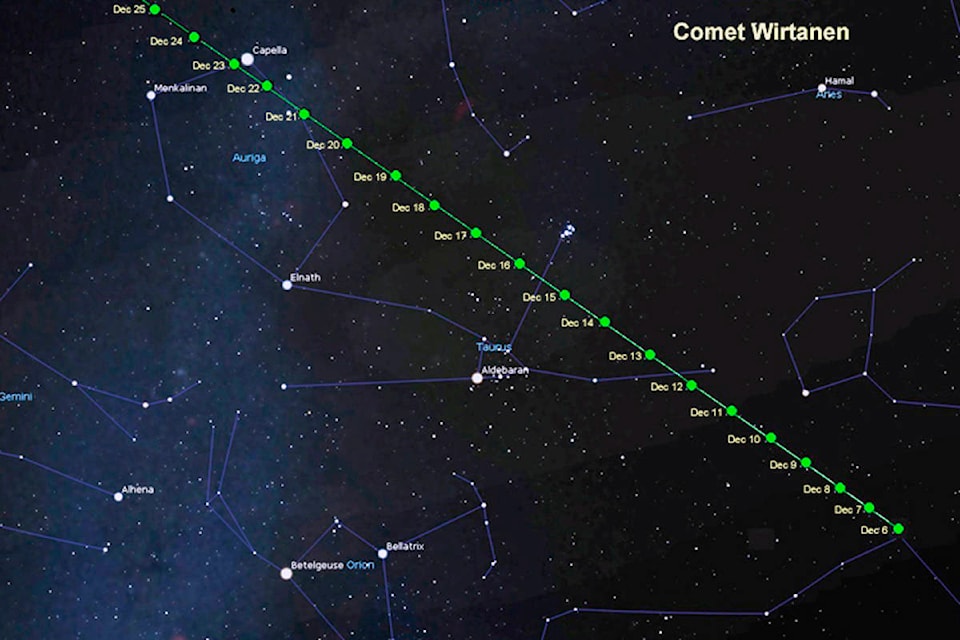This year’s brightest comet will be visible next week.
While comets are usually faint and can only be seen with a telescope but, throughout December, the 46P/Wirtanen comet will grow larger and brighter as it moves north. Its closest approach to Earth occurs on Dec. 16 at a distance of 11.5 million kilometres. On the nights Dec. 15 and 16, Comet Wirtanen also passes between the Pleiades and Hyades star cluster and the comet could become bright enough to be seen with the naked eye from the dark countryside, without the moon present.
According to Sky & Telescope, this will be the 20th closest approach of a comet dating back to the ninth century A.D. and the 10th closest since 1950.
The annual Geminid meteor shower also peaks on the night of Dec 13-14. The moon sets around 10:30 p.m. local time allowing for a dark sky for the rest of the night. Experts said the best time to see the maximum number of meteors is after midnight and towards dawn when the constellation is highest in the sky. This shower products 120 meteors per hour as sand-sized particles from asteroid 3200 Phaethon (a possible dead comet) completely vapourize as they strike our atmosphere at 35 km/sec. The Geminids also produce occasional fireballs that can light up the ground. Experts have called it is a “must-see event.”
For thousands of years, the night sky has been a place of entertainment and guidance. It was also the foundation of myths and superstitions. Bright comets were deemed to be messengers of impending doom such as drought, disease, famine, war, etc. Located in the outer reaches of our solar system, comets are mountains of rock and ice that are sometimes nudged toward the inner solar system and round the sun. The outflow of gas and dust caused by solar heating generates a green fog around the comet and most times a dust tail and/or ion tail.
Related: Perseids meteor shower peaks this weekend
Related: Spectacular meteor show expected
Related: Okanagan Valley has best view of celestial light show
To report a typo, email:
newstips@vernonmorningstar.com.
@VernonNews
newstips@vernonmorningstar.com
Like us on Facebook and follow us on Twitter.
